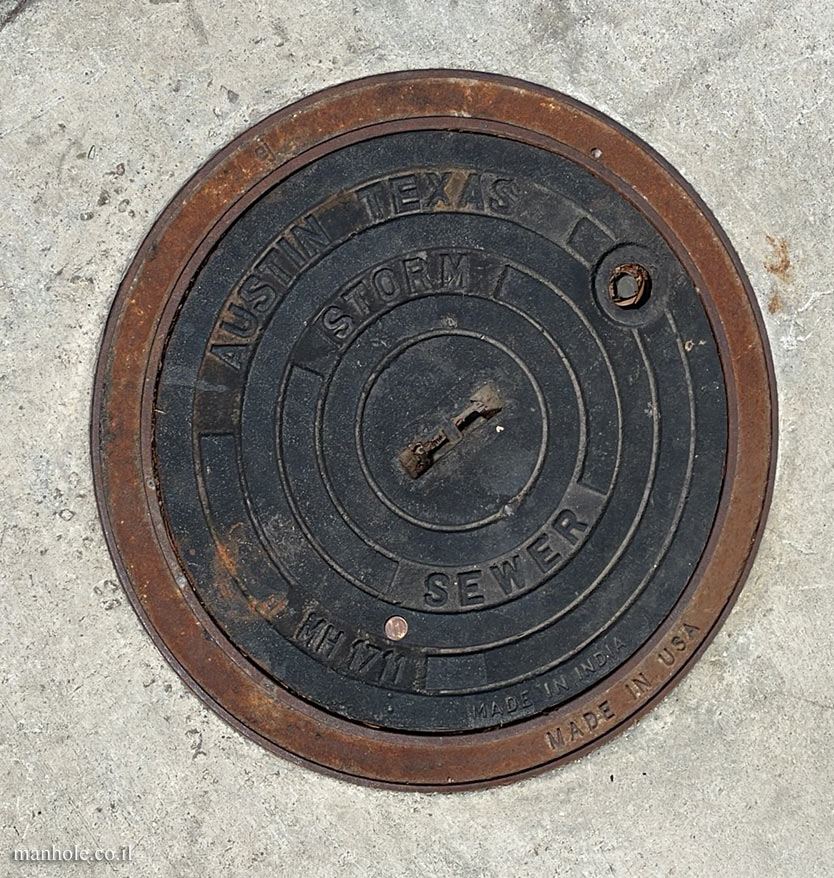Austin & Elgin Streets Oval Manhole Cover in the City of Houston, Texas
Author: Melinda Luna PE
May 2024
Manhole covers, or maintenance covers, prevent the entry of materials and people into sewer systems. They provide an entry point for the system to be maintained and protect vehicles and people from falling into the system. The manholes break up the sewer line into convenient lengths. They also serve as ventilation for the sewers, as systems in the early days found out that ventilation was needed. The covers started as slabs of stone and wood until ironworks made them of cast iron around 1860. In the past, many shapes of these covers were used, including triangular, hexagonal, square, and oval, to name a few.
A request from the City of Houston was received, showing an oval manhole at the intersection of Elgin and Austin Streets in the city of Houston. While the manhole cover was worn, there were several words on the cover, which included:
H.B. Rice, Mayor
Hartwell Iron Works, Houston, Texas
F.L. Dormant, Engineer
The question posed about this location was why it features an oval shape rather than the traditional circular cover.
A swift search of newspaper articles from 1909 revealed the project’s narrative. The area of Austin and Elgin streets formerly consisted of open channels. F. L. or Francis Leonard Dormant served as the city engineer from 1902 to 1915, working with several mayors, including H. Baldwin Rice, whose name appears on the cover. Additionally, Dormant worked as a consultant engineer. Though he hailed from Holland, he received his education in Germany at Clausdel Bergsckul in Hanover and Ecole de Beaux Art et Manufacturers in Paris. Dormant was esteemed as an exceptional engineer by the mayors he served under as the City Engineer. The Austin Street sewer was among the longest in the city at that time. The Hartwell Iron Works, one of the largest establishments in the area, supplied the covers. Their advertisements appeared in newspapers and their location was at McDonald and Runnels
The plans from the City of Houston were available but the plans did not specifically call for an oval manhole cover. However, the shape of the manhole was made of brick and was more elliptical than a box. The oval manhole allows a larger area where you can attach pipes. Ovals were used in other areas such as Brooklyn. Ovals were noted as easier to open, and provide access in a smaller width area, in addition, this particular manhole cover was in two parts making it easier to open and lift. Other oval manholes have been seen in other parts of Houston. More research would have to be done to locate all the oval manholes to see how many there are and when they were built. It was the preference of the engineer Dormant to use this style of system. The system in this area looks great for being 113 years old.
Today, Manhole covers are round so that any way they are put in place they will not fall through the opening, Square manholes can fall through if inserted diagonally. The cover can also be rolled, is easier to cast, and is economical because there is less surface area and no sharp edges.



